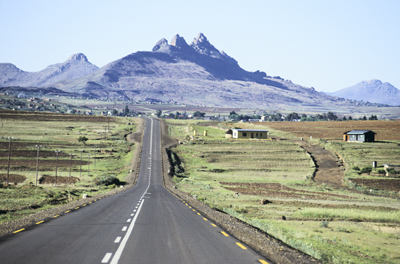Reviving and Improving the Diamond Industries of Armenia and Lesotho

Summary
The dismantling of the Soviet Union in the early 1990s led to the near collapse of the Armenian diamond cutting industry, which after a brief period of growth in the early 2000s has again declined. To rebuild the industry using global best practices and to increase access to raw diamonds, the Armenian government contacted the World Bank. Meanwhile, Lesotho had identified the diamond industry as a potential source for growth and had commissioned three diamond mines. The government also wanted to attract foreign direct investments and train high-skilled local labor to add value downstream. In response to these needs, the World Bank organized a global conference that included high-ranking officials from Armenia, Lesotho, Botswana, Liberia, Mauritius, and Namibia, as well as experts from Canada, India, and the United States. The South-South Diamond Processing Exchange explored policies for developing sustainable diamond processing, sorting, cutting, polishing, and marketing. The conference also addressed the issue of using economic growth generated through diamond extraction and related processing to create sustainable skilled jobs and reduce poverty.
“For any country to be competitive in the cutting and polishing industry, it needs adequate access to rough diamonds, affordable labor and operating costs . . . and responsible laws,” said Rick Meyers, Vice President for Diamond Affairs at the Mining Association of Canada. “Such development brings positive social and economic benefits to the country and its people.”
The participants shared experiences and best practices in creating competitive fiscal and tax regimes to attract foreign and domestic investment in diamond processing. The conference participants learned about global market trends, human-resource development needs, and attracting professional labor. They walked away with ideas for reducing poverty by boosting local employment and improving training. Armenia is contemplating steps to establish a free trade zone for its diamond and jewelry sector, while Lesotho learned how to optimize operations of its newly established Jewelry Center and maintain competitive tax regulations to stimulate growth and reinvestments. The exchange introduced officials from both Lesotho and Armenia to the concept of linking wholesale and retail markets for final diamond products by branding and establishing leading outlets. In addition, they heard about the importance and high potential of the tourism sector for retail markets and indirect exports.
Beneficiaries / Participants
Armenia, which was the center of diamond cutting in the former Soviet Union, experienced a sharp economic decline after independence in the early 1990s, which led to the virtual collapse of the industry. Although efforts to revive it using help from diaspora networks were successful, the sector has not been able to sustain growth. To foster the rebirth of a sustainable diamond cutting industry and introduce the regulatory and tax changes needed to attract new investment, Armenia’s Ministry of the Economy contacted the World Bank. They wanted to get support for designing policies for raw diamond import expansion and re-establishing Armenia as a major diamond-cutting country. Meanwhile, the recent reopening of the three diamond mines in Lesotho led to renewed interest in the country as a source of raw diamonds. Although the employment numbers are quite low compared to other industries in Lesotho, diamond mining had a potential for growth. Lesotho’s main objective in the mining industry was to make its mines more competitive by attracting foreign direct investments (FDI) and training local workers for expert diamond jobs historically held by foreigners.
Armenia and Lesotho were among the countries that requested the help of the World Bank in organizing a conference for representatives from governments interested in developing their diamond industries. The resulting South-South Diamond Processing Exchange included Lesotho, Armenia, Botswana, Liberia, Mauritius, and Namibia, as well as international consultants and practitioners, namely experts from Canada, India, and the United States. The objective for Lesotho was to add value to their diamonds, which currently are mostly sold raw or uncut. Additionally, both countries wanted to learn international best practices for policies and institutions required to develop sustainable diamond processing, including sorting, cutting, and polishing, and marketing strategies. All conference participants also wanted to learn how economic growth generated through diamond extraction and related processing can contribute to poverty reduction.

 China
China Colombia
Colombia Denmark
Denmark India
India Indonesia
Indonesia Mexico
Mexico Russian Federation
Russian Federation Spain
Spain United Kingdom
United Kingdom